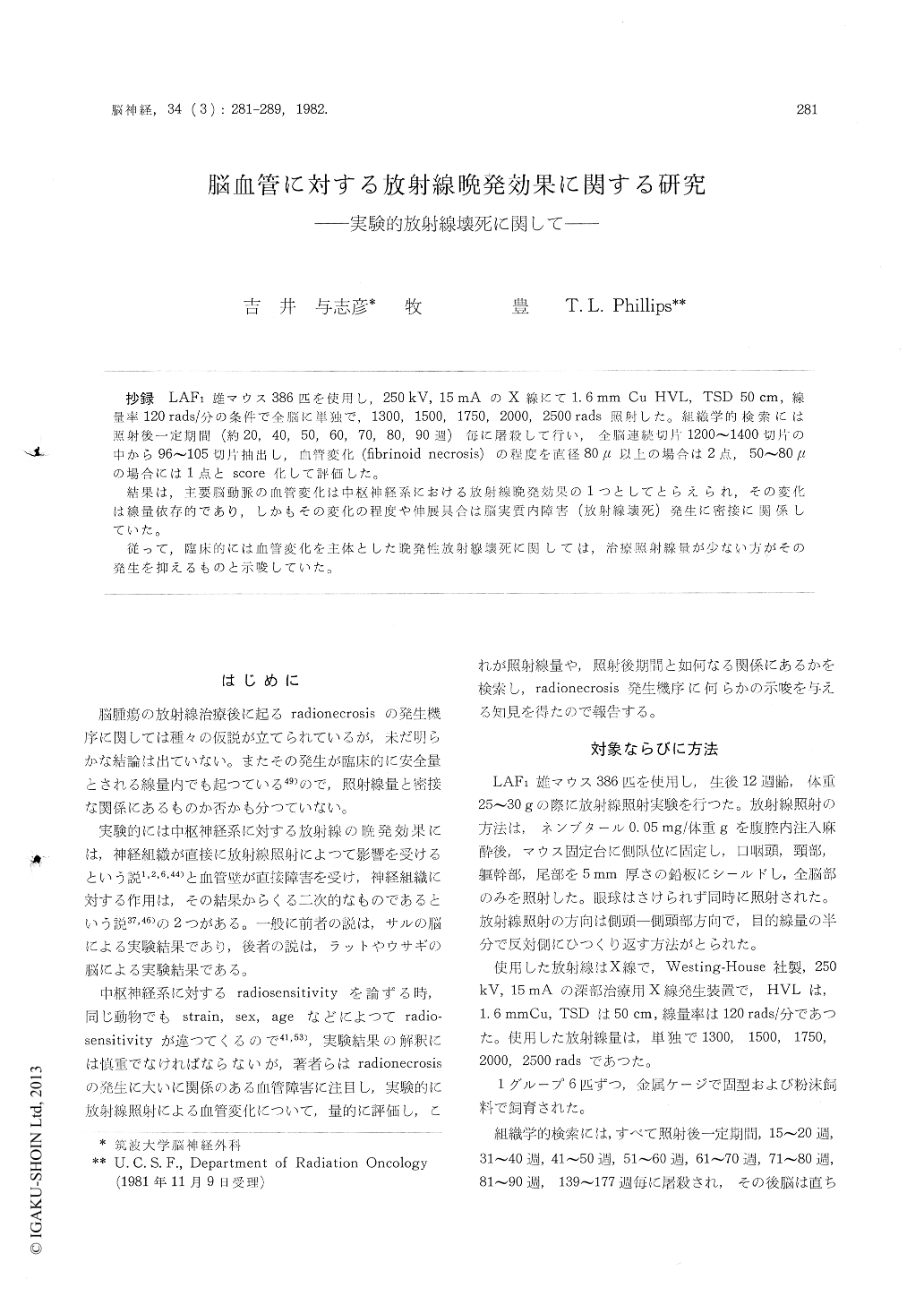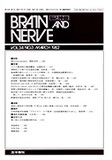Japanese
English
- 有料閲覧
- Abstract 文献概要
- 1ページ目 Look Inside
抄録 LAF1雄マウス386匹を使用し,250kV,15mAのX線にて1.6mm Cu HVL,TSD 50cm,線量率120rads/分の条件で全脳に単独で,1300,1500,1750,2000,2500rads照射した。組織学的検索には照射後一定期間(約20,40,50,60,70,80,90週)毎に屠殺して行い,全脳連続切片1200〜1400切片の中から96〜105切片抽出し,血管変化(fibrinoid necrosis)の程度を直径80μ以上の場合は2点,50〜80μの場合には1点とscore化して評価した。
結果は,主要脳動脈の血管変化は中枢神経系における放射線晩発効果の1つとしてとらえられ,その変化は線量依存的であり,しかもその変化の程度や伸展具合は脳実質内障害(放射線壊死)発生に密接に関係していた。
The whole brains of mice were irradiated with 250 kVp X-ray at 120 rad min-1 (1.6 mm Cu HVL, TSD 50cm) and a histological study was done. The dose range of X-irradiation was from 1300 to 2500 rads. i.e.,1300, 1500, 1750, 2000, and 2500 rads. In the microscopic examination, the mice were killed at the regular postirradiation intervals of between 15 and 20, 31 and 40, 41 and 50, 51 and, 60, 61 and 70, 71 and 80, 81 and 90, 139 and 177 weeks.
A histological examination was performed by a morphometric estimation of vascular lesion in which the degree of the damage to the arterial system was scored through whole serial brain sections.
Necrosis (encephalomalacia), atrophy, cell infiltra-tion, and telangiectatic vascular change of the brain, caused as a result of the fibrinoid necrosis of the large artery were observed.
Incidence of the fibrinoid necrosis increased dose dependently between 41 and 87 weeks after irradiation.
Mean score of fibrinoid necrosis increased dose dependently approximately 60 weeks after irradia-tion.
It is suggested that scores of large vessel damage do relate to dose at 41-87 weeks and can be used to quantify the vessel injury and a fibrinoid ne-crosis of the large vessels may relate to the in-cidence of radioaecrosis.

Copyright © 1982, Igaku-Shoin Ltd. All rights reserved.


